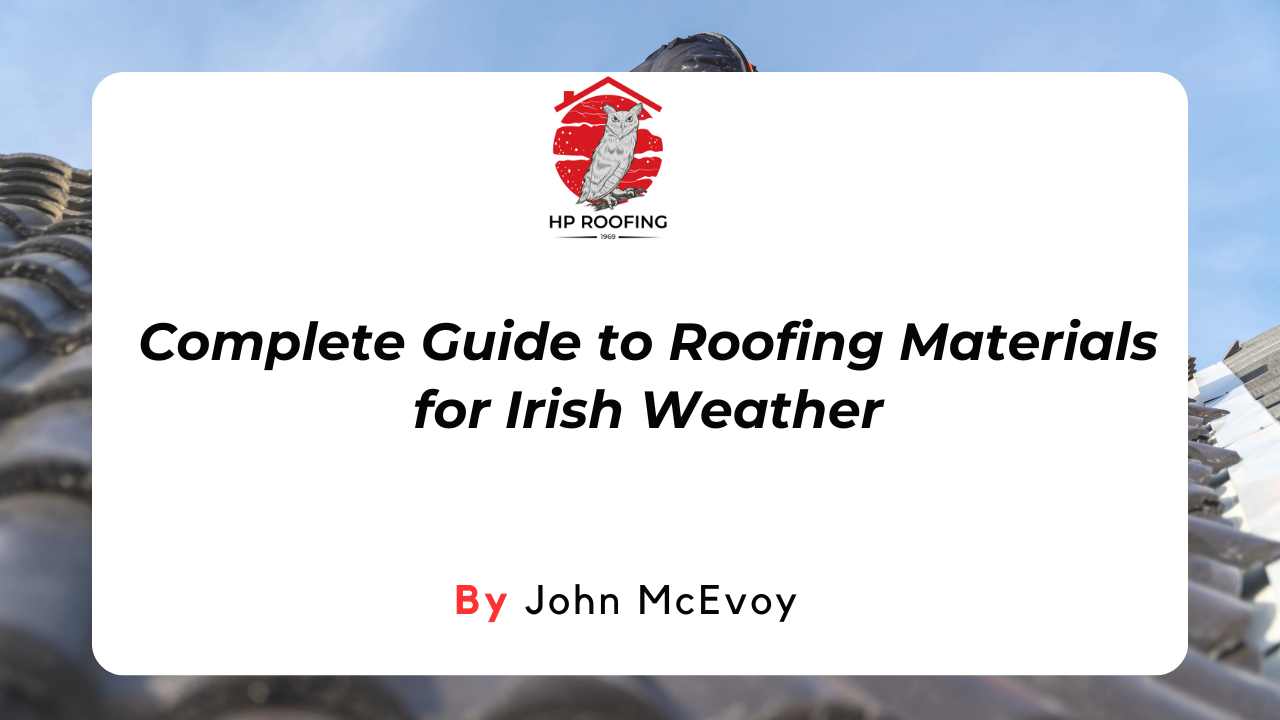Your home is your fortress, your sanctuary, and your roof is its primary defender against the elements. But do you ever wonder, "How often should I replace my roof?" This question may not cross your mind until a leak or visible damage becomes apparent.
However, understanding the lifespan of various roof types and the factors that influence them can help you better maintain your home and plan for roof replacement when necessary.
In this blog, we will explore the average lifespan of different roof types, investigate the factors that impact their durability, and discuss signs of roof damage that can shorten their lifespan.
Unravelling the Average Lifespan of a Roof
Every roof, irrespective of its make, has a lifespan. This duration hinges on several factors, including the type of materials used. Let's delve into the average life expectancy of different roof types and the reasons behind their varying durability.
Composition Shingles: Lasting 12-20 Years
These budget-friendly and easy-to-install roofs are common in many households. However, their shorter lifespan of 12-20 years is due to the lesser durability of the materials, which are susceptible to weathering and damage over time.
Asphalt Shingles: Serving You for 15-30 Years
Asphalt shingles boast a lifespan of 15-30 years. Their durability is due to the combination of asphalt and granules, which provide resistance against weather damage. However, harsh weather conditions can shorten this lifespan.
Wood Shingles: Your Roof for 20-25 Years
Wood shingles, with their natural and rustic appeal, typically last 20-25 years. While the natural oils in wood offer some weather resistance, these roofs are more susceptible to rot and insect damage, limiting their lifespan.
Rubber Roofs: Protecting Your Home for 30-50 Years
Rubber roofs, with their high resistance to weather and fire, can last a remarkable 30-50 years. However, they require regular maintenance to prevent cracking and maintain their integrity over time.
Metal Roofs: Standing Strong for 50-75 Years
Metal roofs are a champion of longevity, offering a lifespan of 50-75 years. They are resistant to rot, fire, and insects, and their durability can be further enhanced with proper maintenance and coating.
More Than Meets the Eye: Other Factors That Play Crucial Roles in Roof Lifespan
While your roof's material significantly affects its lifespan, it's not the sole determiner. Often overlooked factors can significantly influence how long your roof will last. Let's dive deeper into these elements:
Quality of Installation
Even the best roofing materials won't stand the test of time if the installation is faulty. A well-executed installation by experienced professionals can significantly extend your roof's life by ensuring the correct fitting, alignment, and sealing of all roofing components.
Climate and Weather
Your home's roof is continuously exposed to the weather. Consequently, its lifespan can be significantly impacted by your local climate. Harsh weather conditions, such as heavy rain, hail, high winds, and extreme temperatures, can accelerate wear and tear, shortening your roof's lifespan. On the other hand, a roof in a mild climate may last longer than expected.
Maintenance
Regular maintenance is the key to a long-lasting roof. This includes cleaning gutters, removing debris, inspecting for damage after severe weather, and fixing small issues before they escalate. Neglecting these tasks can lead to accumulated damage, shortening your roof's lifespan.
Ventilation
A well-ventilated roof helps regulate temperature and moisture levels in the attic, preventing damage such as rot and mould, which can weaken the roofing structure over time.
Insulation
Proper insulation contributes to the longevity of your roof. It helps maintain a consistent attic temperature, reducing the risk of ice dam formation in winter, which can cause significant damage to the roof.
Spotting the Warning Signs: Roof Damage That Could Spell a Shortened Lifespan
Spotting early signs of roof damage can prevent small issues from turning into significant problems that could shorten your roof's lifespan. Here's a deeper look at key warning signs:
Leakage
Persistent leaks are often a tell-tale sign of substantial damage. They suggest a breach in the roof's surface, which can lead to more extensive damage if not addressed promptly. Over time, leaks can cause structural damage, mould growth, and even electrical issues.
Missing or Damaged Shingles
Shingles are your roof's first defence against the elements. Missing or damaged shingles expose the underlying materials to the weather, leading to leaks and other damage. Regularly inspect your roof for loose, curled, cracked, or missing shingles, and replace them as needed.
Granule Loss
If you start noticing granules—tiny, sand-like pieces from your shingles—in your gutters or downspouts, it's a sign your roof is losing its protective layer. This granule loss can accelerate the ageing process of your roof.
Sagging Roof
A sagging roof is a serious sign of structural issues, often caused by heavy loads, such as snow or water, or structural decay due to moisture damage. This issue requires immediate attention to prevent potential collapse.
Scheduled Inspections: Your Proactive Approach to Maximising Your Roof's Lifespan
Regarding roof care, being proactive is always better than being reactive. Regular roof inspections are the cornerstone of this proactive approach, serving as your secret weapon to prolong your roof's lifespan. But why are these routine check-ups so crucial?
Early Detection of Potential Issues
Your roof might seem fine from a distance. However, minor problems, if left unattended, can escalate into significant issues. Regular inspections can unearth these potential problems, including missing shingles, clogged gutters, or signs of water damage before they become serious.
Early detection allows you to take prompt remedial actions, minimising the risk of extensive damage that could shorten your roof's lifespan.
Cost Savings
While inspections might seem unnecessary, they can save a lot in the long run. You can avoid costly repairs or premature roof replacement by identifying and addressing minor issues early.
Consider these inspections as an investment rather than a cost, contributing to your roof's longevity and the home's overall value.
Maintaining Your Roof's Structural Integrity
Beyond spotting surface issues, a thorough inspection can also assess your roof's structural integrity. Experienced professionals can check for signs of sagging, internal water damage, or structural weaknesses that may not be visible outside.
By reinforcing your roof's structure when necessary, you can extend its life and ensure it continues to protect your home effectively.
Enhancing Energy Efficiency
A well-maintained roof contributes to your home's overall energy efficiency. Regular inspections can identify areas of heat loss or inadequate insulation, allowing you to address these issues and enhance your home's energy efficiency. As a result, you can enjoy reduced energy bills while maximising your roof's lifespan.
Peace of Mind
Perhaps one of the most significant benefits of regular roof inspections is the peace of mind it offers. Knowing that your roof is in good condition and any issues have been addressed can provide a sense of security for you and your family.
Ideally, your roof should be inspected twice yearly — once in spring to check for any damage caused by winter weather and once in autumn to prepare for the harsh winter conditions. Moreover, it is advisable to schedule a roof inspection after any severe weather event, such as a storm or heavy snowfall.
















